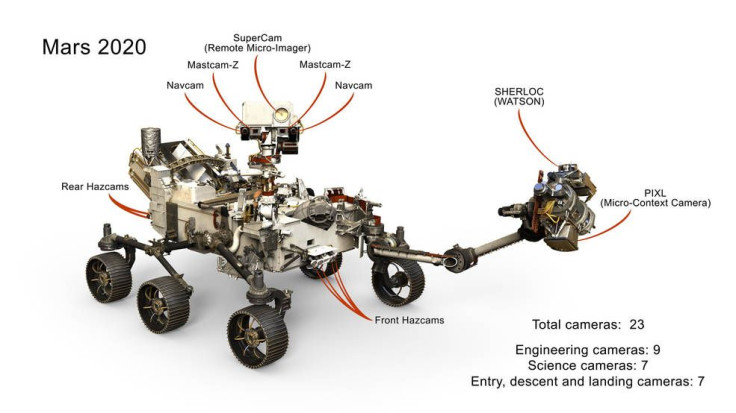NASA Equips Perseverance Rover With Special ‘Eyes’ To Explore Mars

KEY POINTS
- NASA will equip Perseverance with a new imaging instrument
- Perseverance's Mastcam-Z is more advanced than Curiosity's Mastcam
- Mastcam-Z has various imaging functions
NASA’s newest robotic rover will be equipped with the most advanced pair of “eyes” ever sent to Mars. Through the instrument, the Perseverance rover will be able to thoroughly explore the Red Planet.
Perseverance will be the next rover that NASA will send to Mars through an upcoming mission. Dubbed as Mars 2020, the mission will involve collecting rock and soil samples from the Red Planet for analysis.
In order to carry out its mission properly, NASA will equip Perseverance with a piece of new equipment known as Mastcam-Z. Similar to Curiosity’s Mastcam, Mastcam-Z is an imaging instrument that will provide NASA scientists with detailed views of the Martian surface.
The main difference, however, between Perseverance and Curiosity’s Mastcam instruments is the former’s Z, which stands for zoom. Unlike Curiosity, Perseverance’s Mastcam-Z will have zoom capabilities, enabling scientists and engineers to get a closer look at the various natural features on Mars.
In addition, Perseverance will be able to create more detailed 3D imagery using the Mastcam-Z’s zoom features. Through the help of 3D goggles, rover operators will be able to accurately plan out Perseverance’s routes and movements.
Aside from these, Mastcam-Z also has enhanced vision. As noted by NASA, the instrument can view surroundings under various wavelengths of light, including those that can’t be detected by the human eye. Through this feature, NASA aims to identify the various materials on the Martian surface, such as fallen meteorites.
“Mastcam-Z will provide ‘superhuman vision,’ viewing the landscape in a variety of colors (wavelengths of light), including some that can't be detected by the human eye,” NASA stated. “Scanning the terrain in the ultraviolet or infrared, for example, could reveal metal meteorites dotting the surface or color variations indicating compositions that warrant more detailed analysis by other instruments.”
The Mars 2020 mission is expected to launch on July 17. NASA predicted that the mission will reach its target site, which is the Jezero crater, on Feb. 18, 2021. Through the Perseverance rover, NASA aims to study the geological features of the crater, which is believed to have once held liquid water.
The rover will also collect samples from Mars, which will be analyzed to determine if they contain traces of alien life.
© Copyright IBTimes 2024. All rights reserved.





















